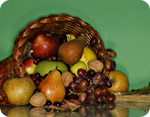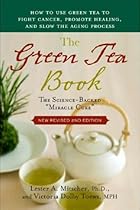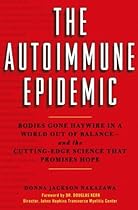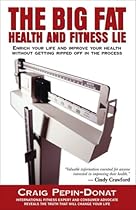Mike Adams, the Health Ranger
See article keywords and concepts |
 All with 100% natural vegetables and fruits.)
You don't need to go to a juicing center or clinic to do this. You can do it from your own kitchen, safely, affordably and successfully.
I've personally found Juice Feasting to be nothing less than life changing. Once I tried this for three days, I was hooked. I've now been on a modified Juice Feast ever since I met David Rain. It has become my new, healthy lifestyle.
I'm drinking five quarts of juice a day, which means I'm drinking thousands of phytonutrients from about five pounds of fresh produce every single day. All with 100% natural vegetables and fruits.)
You don't need to go to a juicing center or clinic to do this. You can do it from your own kitchen, safely, affordably and successfully.
I've personally found Juice Feasting to be nothing less than life changing. Once I tried this for three days, I was hooked. I've now been on a modified Juice Feast ever since I met David Rain. It has become my new, healthy lifestyle.
I'm drinking five quarts of juice a day, which means I'm drinking thousands of phytonutrients from about five pounds of fresh produce every single day. |
Lester A. Mitscher and Victoria Toews
See book keywords and concepts |
 The tea drinkers were less likely to eat high-fat dinners, but more likely to consume fish, salads, potatoes, vegetables, and fruits than coffee drinkers. Also, cigarette smokers were more likely to be coffee drinkers, not tea drinkers. The use of tea was associated with an active lifestyle. Tea drinkers more often reported being physically active. Overall, regular coffee intake was associated with negative health behaviors, while drinking tea was linked to a health-conscious, illness-preventive lifestyle. The tea drinkers were less likely to eat high-fat dinners, but more likely to consume fish, salads, potatoes, vegetables, and fruits than coffee drinkers. Also, cigarette smokers were more likely to be coffee drinkers, not tea drinkers. The use of tea was associated with an active lifestyle. Tea drinkers more often reported being physically active. Overall, regular coffee intake was associated with negative health behaviors, while drinking tea was linked to a health-conscious, illness-preventive lifestyle. |
Too Profitable to CureBrent Hoadley, Ph.D.
See book keywords and concepts |
| What is a diabetic to do when current medical thinking also states:
• High sugar foods are bad (even complex carbohydrates and high sugar fruits);
• High fat diets will clog arteries, increasing risk of heart disease;
• High protein diets, because of the peculiarity of diabetes, are to be avoided because of the wear and tear on a system with already stressed renal function.
All that is left for safe diabetic consumption is H20; and health merchants tell us that our water is polluted. |
| The foodstuff, whether it is grains, vegetables, fruits, meats, or a product that does not look like it had even been part of our living environment, has probably had most of the nutritional value destroyed by processing.
Follow the reaction of the food industry to the hot topic of the day, be it obesity, high blood pressure, diabetes, depression, high cholesterol, etc. If you are the "victim" of one of these hot topics, consider yourself a target. Both the pharmaceutical industry and the food industry have you clearly in their sights. |
Lester A. Mitscher and Victoria Toews
See book keywords and concepts |
 Out of the fifty-four vegetables, fruits, nuts, herbs, spices, and teas that he tested, green tea was ranked number five, producing a 91-percent relaxation of the endothelium (lining of blood vessels). Black tea, presumably because it has lower polyphenol levels, only relaxed the blood vessels by 66 percent.20
THE "BRAIN ATTACKS" CALLED STROKES
Strokes belong to a class of disorders called "cerebrovascular disease," meaning that the blood vessels feeding the brain are involved. Each year approximately 300,000 Americans suffer a stroke. Out of the fifty-four vegetables, fruits, nuts, herbs, spices, and teas that he tested, green tea was ranked number five, producing a 91-percent relaxation of the endothelium (lining of blood vessels). Black tea, presumably because it has lower polyphenol levels, only relaxed the blood vessels by 66 percent.20
THE "BRAIN ATTACKS" CALLED STROKES
Strokes belong to a class of disorders called "cerebrovascular disease," meaning that the blood vessels feeding the brain are involved. Each year approximately 300,000 Americans suffer a stroke. |
| Moreover, tea may make an even greater contribution than fruits and vegetables. In a comparison of the antioxidant activity of various vegetables (including garlic, spinach, broccoli, kale, Brussels sprouts, onions, and many others) with the antioxidant activity of green and black tea, the teas were found to have a greater ability to quench free radicals than the vegetables. Clearly, green tea is a powerful agent for fighting free radicals,2 and it can be added to your daily antioxident arsenal in beverage or dietary supplement form. |
| These guidelines advise people to lower their fat intake, increase fiber intake, choose plentiful amounts of fruits and vegetables, maintain an ideal body weight, use alcohol in moderation, and avoid certain processed foods.
þ Limit Fat Intake to 30 Percent of Calories or Less
Research studies of animals and humans show that a high-fat diet increases the risk of many cancers, including colon and prostate cancer. Conversely, a low-fat diet has been shown to reduce the risk of many cancers. An additional benefit of a low-fat diet is the fact that it helps most people maintain a healthy weight. |
Ray D. Strand
See book keywords and concepts |
 Most antioxidants we get from vegetables and fruits. The most common antioxidants are vitamin C, vitamin E, vitamin A, and beta-carotene. We can obtain numerous other antioxidants from our food; these include coenzyme Q10, alpha-lipoic acid, and the colorful bioflavanoid antioxidants. It is important to realize that antioxidants work in synergy with one another to disarm free radicals in different areas of the body. Like the varied positions of military defense, these antioxidants each have specific roles. Most antioxidants we get from vegetables and fruits. The most common antioxidants are vitamin C, vitamin E, vitamin A, and beta-carotene. We can obtain numerous other antioxidants from our food; these include coenzyme Q10, alpha-lipoic acid, and the colorful bioflavanoid antioxidants. It is important to realize that antioxidants work in synergy with one another to disarm free radicals in different areas of the body. Like the varied positions of military defense, these antioxidants each have specific roles. |
Mike Adams, the Health Ranger
See article keywords and concepts |
 Avoid all processed foods, period (no factory-made products)
Eat fresh produce: Veggies, fruits, nuts and seeds
Eat superfoods and juice your produce on a regular basis
That's the recipe for lasting weight loss. You certainly don't lose weight by eating pizza, ice cream and burgers. You do it by eating fresh produce and avoiding processed foods and animal products.
The title of this article is completely nonsensical to begin with: "Bad foods that are actually great for your waist." How can foods that are bad somehow magically be great for your waist? Avoid all processed foods, period (no factory-made products)
Eat fresh produce: Veggies, fruits, nuts and seeds
Eat superfoods and juice your produce on a regular basis
That's the recipe for lasting weight loss. You certainly don't lose weight by eating pizza, ice cream and burgers. You do it by eating fresh produce and avoiding processed foods and animal products.
The title of this article is completely nonsensical to begin with: "Bad foods that are actually great for your waist." How can foods that are bad somehow magically be great for your waist? |
Andreas Moritz
See book keywords and concepts |
 The best advise is to breastfeed as long as is possible, avoid dairy-based formulas altogether, use alternatives such as coconut milk (the closest to human milk) as well as some almond milk, hemp milk or rice milk; and give freshly mashed fruits, vegetables and rice when the baby is ready to eat solids.
Boiling fresh, non-pasteurized milk before consumption seems to have a beneficial effect. Milk protein begins to break down into amino acids during boiling, which makes it easier to digest and absorb. This may be one of the reasons why Indians always boil their milk before use. The best advise is to breastfeed as long as is possible, avoid dairy-based formulas altogether, use alternatives such as coconut milk (the closest to human milk) as well as some almond milk, hemp milk or rice milk; and give freshly mashed fruits, vegetables and rice when the baby is ready to eat solids.
Boiling fresh, non-pasteurized milk before consumption seems to have a beneficial effect. Milk protein begins to break down into amino acids during boiling, which makes it easier to digest and absorb. This may be one of the reasons why Indians always boil their milk before use. |
Bill Sardi
See book keywords and concepts |
 The Secret of Extracts
Which is better for optimal health, consumption of fresh fruits, vegetables and herbs, or the extracts of these herbs, often provided as liquid or powdered dietary supplements? Let's investigate.
Recently Cornell University food researchers claimed "an apple a day can help keep breast cancer away." Well, to be more precise, more like six apples a day. Rats fed extracts from apples were protected from developing breast cancer. The equivalent of one, three or six apples reduced the incidence of breast tumors by 17, 39 and 44 % and the number of tumors by 25, 25 and 61%. The Secret of Extracts
Which is better for optimal health, consumption of fresh fruits, vegetables and herbs, or the extracts of these herbs, often provided as liquid or powdered dietary supplements? Let's investigate.
Recently Cornell University food researchers claimed "an apple a day can help keep breast cancer away." Well, to be more precise, more like six apples a day. Rats fed extracts from apples were protected from developing breast cancer. The equivalent of one, three or six apples reduced the incidence of breast tumors by 17, 39 and 44 % and the number of tumors by 25, 25 and 61%. |
Donna Jackson Nakazawa
See book keywords and concepts |
 We've gone from a whole-foods diet—one in which we digested whole grains, fruits, vegetables, poultry, and livestock produced locally or on our own land—to a processed-food diet. This processed-food diet often consists of highly preserved bread products, doughnuts, prepackaged coffee cakes, and cereals laden with sugar for breakfast. (Think of it: one bowl of Cocoa Puffs has the same amount of sugar as a 50-gram bag of Hershey's Kisses, and a bowl of Corn Pops is the sugar equivalent of eating a Kit Kat bar. We've gone from a whole-foods diet—one in which we digested whole grains, fruits, vegetables, poultry, and livestock produced locally or on our own land—to a processed-food diet. This processed-food diet often consists of highly preserved bread products, doughnuts, prepackaged coffee cakes, and cereals laden with sugar for breakfast. (Think of it: one bowl of Cocoa Puffs has the same amount of sugar as a 50-gram bag of Hershey's Kisses, and a bowl of Corn Pops is the sugar equivalent of eating a Kit Kat bar. |
| However, these continue to leach out from goods manufactured prior to that time, as well as circulate into the air, soil, and sediment, which is why they continue to be commonly detected in our fruits, vegetables, meats, and dairy products. Deca-BDEs, the most commonly used subgroup of PBDEs, remain in wide use because they were thought to be less easily absorbed into the body. Recently, however, investigators have found that even deca-BDEs turn into the more easily absorbed and toxic penta-BDEs as they degrade in the environment around us. |
| Fruits and vegetables no longer pack the nutritional wallop they once did; their nutrient value has declined as much as 38 percent since 1950. One reason is that farmers tend to select produce breeds that are faster growing, bigger, and more pest resistant—meaning crops have inadequate time to make or absorb nutrients during their shortened growing season. Likewise, the soil in which crops are grown is contaminated with far more mercury, PCBs, and other noxious industrial fallout than it was half a century ago. |
| Until we see change in this arena, buy pesticide-free fruits and vegetables for yourself and for your children.
Indeed, one recent study funded in part by the Centers for Disease Control and Prevention found that eating organic foods substantially lowers children's dietary exposure to organophos-phate pesticides. Investigators measured the exposure to several organophosphate pesticides in twenty-three children between the ages of three and eleven over a fifteen-day period. |
Craig Pepin-Donat
See book keywords and concepts |
 Fruits and vegetables are doused with fertilizers, pesticides and herbicides. Thousands of chemicals are routinely added to canned and processed foods to improve taste and extend shelf life. Livestock are regularly injected with growth hormones to increase salable flesh yields and massive amounts of antibiotics to stave off diseases before slaughter and eventual serving on our dinner tables.
Sadly, shockingly, our toxic exposure doesn't end there. Fruits and vegetables are doused with fertilizers, pesticides and herbicides. Thousands of chemicals are routinely added to canned and processed foods to improve taste and extend shelf life. Livestock are regularly injected with growth hormones to increase salable flesh yields and massive amounts of antibiotics to stave off diseases before slaughter and eventual serving on our dinner tables.
Sadly, shockingly, our toxic exposure doesn't end there. |
| Fit for Life focuses on food combining with an emphasis on living foods such as raw fruits and vegetables.
Other diets that use a cultural hook include: The Mediterranean Diet, Japanese Women Don't Get Fat and French Women Don't Get Fat. Desperate dieters still follow the Cabbage Soup Diet or the Grapefruit Diet. Others join Weight Watchers, Nutrisystem® and Jenny Craig®, each of which tries to convince you that you need their food menus to succeed. Slimfast would have you believe that replacing meals with shakes is the answer.
These diets have two things in common. |
Anne Harrington
See book keywords and concepts |
 The moral fruits have been no less remarkable. The deliberate adoption of a healthy-minded attitude has proved possible to many who never supposed they had it in them; regeneration of character has gone on, on an extensive scale; and cheerfulness has been restored to countless homes.31
If New Thought could have such apparently potent effects on health and general well-being, could it do more besides? Could it, for example, make a person not just healthy but also wealthy? By the early twentieth century, an increasing number of New Thought teachers were saying it could. The moral fruits have been no less remarkable. The deliberate adoption of a healthy-minded attitude has proved possible to many who never supposed they had it in them; regeneration of character has gone on, on an extensive scale; and cheerfulness has been restored to countless homes.31
If New Thought could have such apparently potent effects on health and general well-being, could it do more besides? Could it, for example, make a person not just healthy but also wealthy? By the early twentieth century, an increasing number of New Thought teachers were saying it could. |
Jonny Bowden, Ph.D., C.N.S.
See book keywords and concepts |
 You'll definitely want it in your nutrient tool kit should you ever get stuck on a desert island— especially if you're not prone to eating a ton of fruits and vegetables. You'll definitely want it in your nutrient tool kit should you ever get stuck on a desert island— especially if you're not prone to eating a ton of fruits and vegetables. |
| It was a particular problem for anyone separated from fruits and vegetables for long periods of time. Sailors who went on long voyages, for example, were at particular risk. In the 1400s and 1500s, explorers like Magellan and Vasco da Gama would typically lose more than half their crew to the disease.
Then in 1747, James Lind, a ship's surgeon in the British Royal Navy, conducted a "cutting-edge" experiment that proved that lemon juice could prevent the disease. He published his findings in 1753. |
| The legendary Captain Cook, who made three historic voyages between 1758 and his death in 1769, was credited with using cabbage and fruits to prevent anyone from dying of scurvy on his ships. Still, the British navy didn't make lemon or lime juice a standard requirement on ships until 1795. (This story is frequently used as an example of the "principle" that the establishment takes about fifty years to catch up with the cutting edge. |
| In the late 60s, scientists discovered an acid in the fruit that's somewhat similar to the citric acid found in fruits like oranges and lemons. That acid is called hydroxycitric acid, or HCA, and it may well turn out to be a terrific adjunct to a weight loss program. (Note: Hydroxycitric acid is also commonly referred to as hydroxy citrate. They are interchangeable.)
Folks were very excited about hydroxycitrate for a while back in the 90s because of a number of studies that showed that it causes weight loss in animals. |
| D c
73 m n c
73 m
MSM, which stands for methyl sulfonyl-methane, is actually a naturally occurring compound found in trace amounts in fruits and vegetables. It's long had the reputation of being great for joint health and the pain of arthritis. The key to MSM's abilities as a miracle worker is its high sulfur content, which makes sense when you realize that for centuries people have visited sulfur-rich hot springs for muscle aches and pains.
"From a structural point of view, sulfur is extremely important for maintaining connective tissues and joints," says Jacqueline Jacques, N.D. |
Donna Jackson Nakazawa
See book keywords and concepts |
 While a few well-known organochlorine insecticides that are notoriously injurious to animals—DDT, for example—have been banned in the United States, even these persist for decades in the soil in which our fruits and vegetables are grown and in our water, meanwhile accumulating up the food chain (which is why traces of DDT can be found in the steaks Becky has yet to cook for dinner). While a few well-known organochlorine insecticides that are notoriously injurious to animals—DDT, for example—have been banned in the United States, even these persist for decades in the soil in which our fruits and vegetables are grown and in our water, meanwhile accumulating up the food chain (which is why traces of DDT can be found in the steaks Becky has yet to cook for dinner). |
Dr. Steve Blake
See book keywords and concepts |
 While supplementary vitamin C has not been confirmed to lower the incidence of colds, vitamin C consumed in fruits and vegetables is correlated with a lower incidence of colds. There are many other excellent nutrients in fresh produce that may contribute to fewer colds. Vitamin C taken as a supplement in doses totaling one gram or more daily has been correlated with lessened severity and slightly shorter duration of colds in some studies.
To fight infections, immune system phagocytes release oxidizing agents to kill viruses and bacteria. While supplementary vitamin C has not been confirmed to lower the incidence of colds, vitamin C consumed in fruits and vegetables is correlated with a lower incidence of colds. There are many other excellent nutrients in fresh produce that may contribute to fewer colds. Vitamin C taken as a supplement in doses totaling one gram or more daily has been correlated with lessened severity and slightly shorter duration of colds in some studies.
To fight infections, immune system phagocytes release oxidizing agents to kill viruses and bacteria. |
Connie Bennett, C.H.H.C. with Stephen T. Sinatra, M.D.
See book keywords and concepts |
 Critics contend that heavy lobbying by the sugar and food industries caused some key policy recommendations to be left out: You will not find suggestions 1) to limit free sugars to 10 percent or less of your caloric intake, 2) to restrict or ban junk food advertising to children, 3) to reduce consumption of soft drinks, or 4) to support policies that promote production and marketing of fruits, vegetables, and legumes. Critics contend that heavy lobbying by the sugar and food industries caused some key policy recommendations to be left out: You will not find suggestions 1) to limit free sugars to 10 percent or less of your caloric intake, 2) to restrict or ban junk food advertising to children, 3) to reduce consumption of soft drinks, or 4) to support policies that promote production and marketing of fruits, vegetables, and legumes. |
Bill Sardi
See book keywords and concepts |
 But people who juice often use vegetables to make their green drinks rather than polyphenol-rich fruits. Certainly, fresh food should not be shunned for a pill or a greens drink. But there is a crying need for more ORAC anti-oxidant power in multivitamins to make up for shortages in the diet.
Multivitamin antioxidant power
Just how much ORAC antioxidant power do multivitamins provide? Various brands of multivitamins were selected based upon their labels which advertised extra antioxidant potency or inclusion of plant extracts. But people who juice often use vegetables to make their green drinks rather than polyphenol-rich fruits. Certainly, fresh food should not be shunned for a pill or a greens drink. But there is a crying need for more ORAC anti-oxidant power in multivitamins to make up for shortages in the diet.
Multivitamin antioxidant power
Just how much ORAC antioxidant power do multivitamins provide? Various brands of multivitamins were selected based upon their labels which advertised extra antioxidant potency or inclusion of plant extracts. |
| Bottom line: eat high ORAC antioxidant-rich fruits (apple peel, grapes, pomegranates, cherries, blueberries). Juicing may be advantageous but poses challenges in having to consume high volumes of food and to maintain fresh stocks in the kitchen. Greens formulas (drinks, powders) may or may not be advantageous and should be labeled for their ORAC values to help consumers evaluate their antioxidant power. The addition of a relatively small amount of fruit extracts to a multivitamin regimen could deliver the ORAC antioxidant power needed when the body is challenged by oxidative stress. |
Dr. Steve Blake
See book keywords and concepts |
 Vitamin C is found in fruits and vegetables. Like all good antioxidants, vitamin C can neutralize a free radical without becoming a free radical itself. Vitamin C can protect many indispensable molecules in the body, such as proteins, fats, carbohydrates, and nucleic acids (DNA and RNA), from damage by free radicals. The protection of DNA from oxidative damage is one way that vitamin C can help reduce the risk of cancer.
Vitamin C also has a role in recharging vitamin E and beta-carotene after they have performed their antioxidant functions. Vitamin C is found in fruits and vegetables. Like all good antioxidants, vitamin C can neutralize a free radical without becoming a free radical itself. Vitamin C can protect many indispensable molecules in the body, such as proteins, fats, carbohydrates, and nucleic acids (DNA and RNA), from damage by free radicals. The protection of DNA from oxidative damage is one way that vitamin C can help reduce the risk of cancer.
Vitamin C also has a role in recharging vitamin E and beta-carotene after they have performed their antioxidant functions. |
| If the amount of potassium-rich fruits and vegetables eaten is not sufficient to produce enough alkalinity to buffer blood acids, the body has the ability to remove calcium from bones. This calcium helps neutralize the blood, but leaves the bones depleted in calcium. This increases the risk of osteoporosis.
Excess dietary sodium can impact calcium levels in the body. Americans eat an average of five grams of excess sodium each day (above the upper intake levels). About 287 mg of extra dietary calcium is needed each day to make up for the calcium lost from this average amount of excess sodium. |












